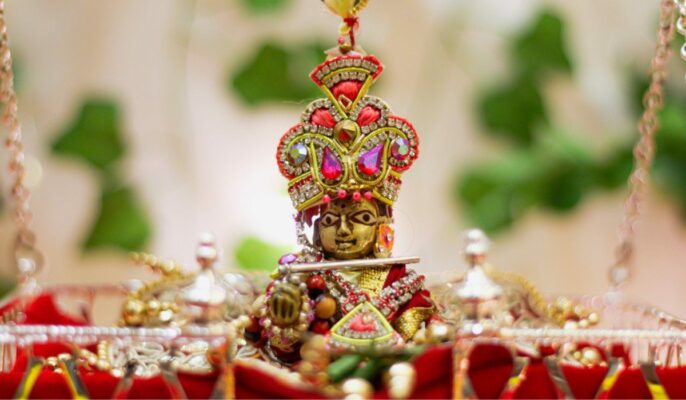Also called Krishna Janmashtami, Janmashtami is an annual Hindu festival that marks the birth of Lord Krishna. According to the Gregorian calendar, it generally occurs in either August or September every year. This festival carries immense cultural and religious importance and is observed by millions of devotees worldwide. The highly anticipated Janmashtami celebration for the year 2023 is scheduled to take place on September 7. In this article, we will delve into how families can celebrate Janmashtami within the comfort of their homes.
Janmashtami celebration at home
Janmashtami celebration at home involves fasting, decoration, praying and preparing feasts. Check some of the best ways to celebrate this festival at home.
Fast until midnight
Fasting constitutes a significant aspect of Janmashtami celebrations. It serves as a means to purify the body and mind while directing one’s focus towards spiritual contemplation. The fast commences at dawn and continues until midnight, during which time individuals abstain from regular meals but may consume water, milk and fruits. For those who find complete fasting challenging, opting for light foods throughout the day to sustain them until midnight is also a viable option. The decision to fast or abstain during Janmashtami is a deeply personal one, with no universally right or wrong choice. What may be suitable for one person may differ from another’s preferences.
Prepare traditional dishes
At the stroke of midnight, signifying the auspicious moment of Lord Krishna’s birth, devotees partake in breaking their fast and come together to share in traditional meals. Additionally, this is the opportune time to make food offerings to Lord Krishna. Some examples of midnight snacks enjoyed during this occasion may include Sabudana Tikki, Aloo Chaat, Roasted Makhana and Fruit Chaat. As for the main meal consumed during Janmashtami, one can relish traditional dishes like Sabudana Thalipeeth, Dahi Aloo, Samvat Rice Khichdi and Singhare ki Poori, all of which are also suitable as offerings to the deity. Furthermore, Janmashtami is an occasion to indulge your sweet cravings with traditional desserts such as Peda, Ladoo, Rasmalai, Gulab Jamun, Kheer and Barfi.
Decorate your home
Enhance the festive atmosphere within your home by adorning it with garlands, leaves and balloons. As part of your Janmashtami celebration, consider inviting friends to join you in collectively decorating your home, creating a warm and welcoming ambiance for the occasion. These decorations hold special significance as they symbolise the invitation of Lord Krishna into your home at the stroke of midnight. To amplify the festive spirit, strategically place potted plants and vibrant bouquets of flowers, particularly near the idol of Krishna. You can also enhance the decor by hanging decorative light garlands around windows and door frames, while colourful balloons can be inflated and allowed to float gracefully in the corners of your ceiling. Flower garlands, leafy festoons and balloons are all traditional decorations commonly found in Hindu temples during Janmashtami, and they are equally fitting for embellishing your home in honour of Lord Krishna.
Source: Design Cafe (Pinterest)
Watch a broadcast of Janmashtami temple services
Numerous temples worldwide offer online broadcasts of their Janmashtami festivities, catering to those unable to participate in person. You can tune in to these webcasts and, if you or your guests are inclined, join in with the songs and chants being performed. The songs commonly sung during these celebrations are usually sourced from the Vaishnava songbook. However, if you’re not familiar with the lyrics or simply prefer to observe, you can also enjoy watching others participate in the singing.
Perform pooja
Prayer plays a central role in any Janmashtami celebration, serving as a profound expression of devotion and a means of seeking blessings. To prepare for the pooja, the first step is to create a sacred space within your home. This can be accomplished by establishing an altar or shrine adorned with an image of Lord Krishna. Additionally, you can enhance the sanctity of this space by decorating it with candles, flowers and other items of spiritual significance. The pooja ceremony can be conducted either by a priest or by a knowledgeable family member familiar with the rituals. Typically, the ceremony commences with the lighting of a lamp and the recitation of mantras. Offerings are then presented to Lord Krishna, accompanied by prayers beseeching his divine blessings.
Source: A Blessed Mess (Pinterest)
| Got any questions or point of view on our article? We would love to hear from you. Write to our Editor-in-Chief Jhumur Ghosh at jhumur.ghosh1@housing.com |
